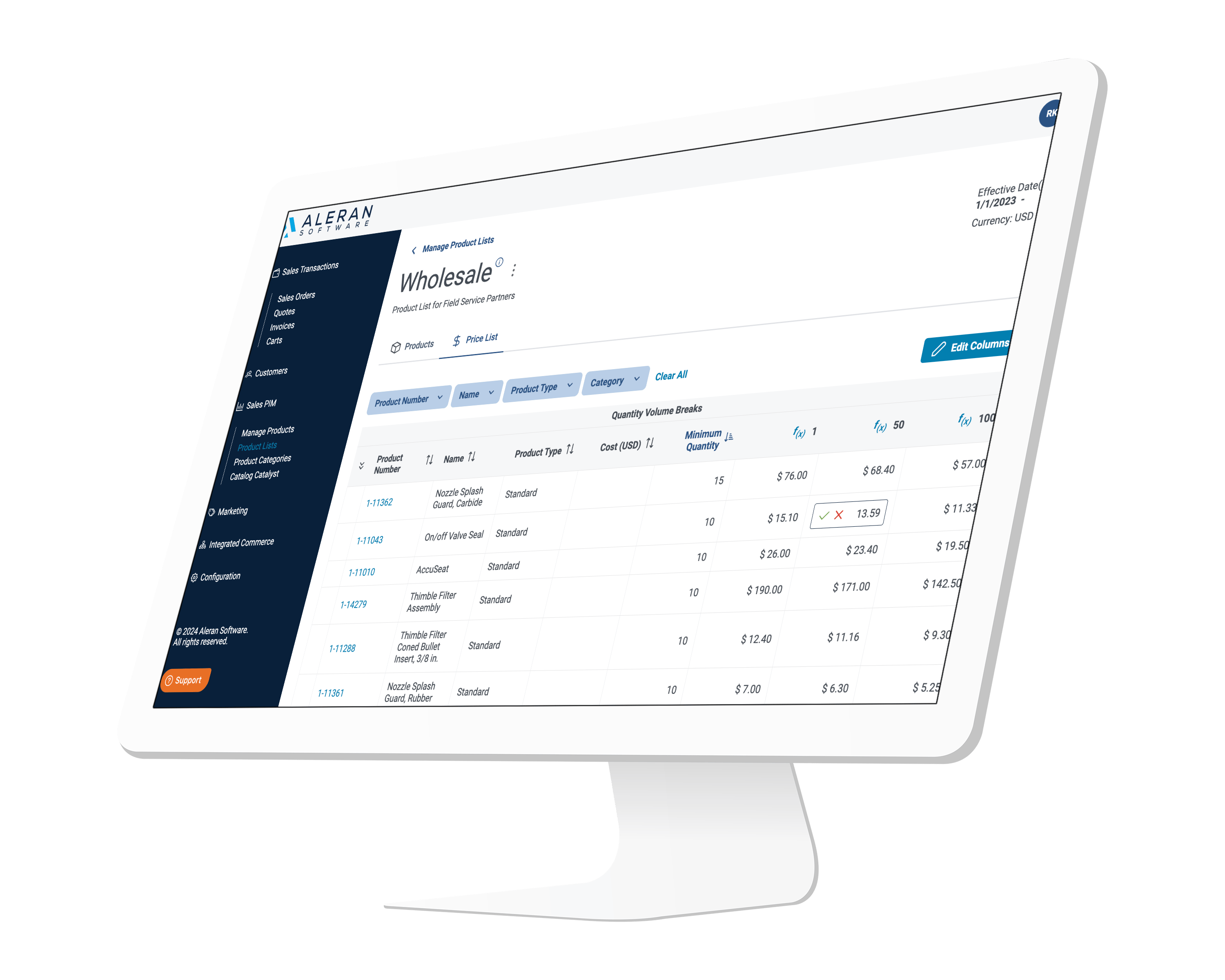As any consumer can tell you, not all online stores are created equal. In today’s hypercompetitive digital commerce landscape, potential customers expect frictionless, self-service shopping experiences that feel intuitive and professional. B2B e-commerce shops that are complicated, outdated or confusing will send potential customers to spend their money elsewhere.
Here are 5 common e-commerce mistakes you don’t want to make:
Mistake #1: Picking the wrong e-commerce platform for your business
From hidden costs and fees to the wrong feature set, choosing the best fit e-commerce platform for your business means research and consideration — taking the time to understand both the benefits and downsides of different platforms and selling models. To maximize value and return on investment, look for an e-commerce platform solution that offers dedicated options for B2B and B2C e-commerce, alongside marketplace capabilities. The right solution will scale with your business, offering tools and technology to connect and meet the respective needs of buyers, reps, agents, and channel partners alike.
Mistake #2: Forgetting to target your target audience
Too often sellers know their targets but then fail to create shopping experiences that speak specifically to their needs. This is especially true in B2B e-commerce, where today’s overwhelmingly millennial B2B buyers demand price transparency, personalization, seamless omnichannel e-commerce experiences and more. Knowing that, sellers must take steps to deliver e-commerce experiences that feel tailored to the buyer, taking an agile and effective selling approach that supports their unique customer journey. That means communicating effectively in a way your target audience prefers (for example, using digital methods vs. in-person), developing a marketing strategy that speaks to your targets and their needs directly, and making sure you’re delivering a shopping experience that’s architect-ed around their needs and unique pain points.
Mistake #3: Failing to use analytics to optimize the user experience
Thoughtful use of analytics in e-commerce separates the good websites from the great ones, helping sellers connect customer experiences to business outcomes. Today, many selling platforms can give you access to very specific data points on everything from top traffic sources, to cart abandonments, to your top-selling products. But, while most sellers have these insights at their fingertips, not all of them know how to make the most of them when it comes to optimization of user experience. To begin, use analytics to pinpoint pain points in the customer journey (low performing pages, or user exits shopping cart abandons, for example). When you connect customer experience with quantitative metrics, you can zero in on implementing the changes that your customers care most about.
Mistake #4: Complicating the checkout experience
Want to increase conversions? Then don’t unnecessarily complicate your checkout experience! Your customers have made it this far into the sales funnel, but abandoned carts are a clue that your checkout or shopping cart function is missing the mark. B2B transactions especially require a tailored user experience (B2B transactions tend to have more complex orders and pricing structures and a significantly longer sales cycle). To help support B2B buyers through these different buying stages, look for ways to better enable the buying journey and checkout experience. Doing so will pay off, as research shows again and again the B2B buyers who experience an outstanding digital experience will be twice as likely to reorder from the supplier who delivered that experience and three times as likely to place a bigger purchase order.
Mistake #5: Having the wrong security in place to protect your customers or your data.
Secure shopping experiences are non-negotiable. From hacking to credit card fraud to misuse of personal data, online commerce businesses need to be sure that their e-commerce platforms are secure and running modern security protocols. Ideally, your platform shouldn’t skimp on security (or overly depend on third-party apps or plugins to do the job for them). Look for strong payment gateway security with accreditation from the Payment Card Industry Data Security Standard (PCI DSS), also known as PCI compliance, which guarantees that merchants are securely storing cardholder data and sensitive authentication data on their websites.
Want to see what Aleran’s omnichannel sales platform can do for your business?
Today’s customers are demanding experiences that are streamlined, secure, and customized. To effectively address audiences with different needs, sellers should consider separate experiences for their B2B and B2C buyers. By creating digital e-commerce sites that address the unique needs of each user type, sellers will improve customer experience, drive customer acquisition, gain market share, increase cash flow and reach higher growth rates than their peers.
OneMart, Aleran’s B2B e-commerce store builder, makes creating custom, secure and professional B2B websites and shoppable catalogs simple and effective. Shopsy, Aleran’s B2C e-commerce store builder, helps sellers create tailored and integrated omnichannel experiences. Using Shopsy’s drag and drop configuration interface, sellers can quickly and easily launch branded online shops without any technical expertise — engaging customers more successfully and growing sales revenues across all digital channels. Request a demo of Aleran’s omnichannel sales platform today!
Follow Aleran on LinkedIn.



